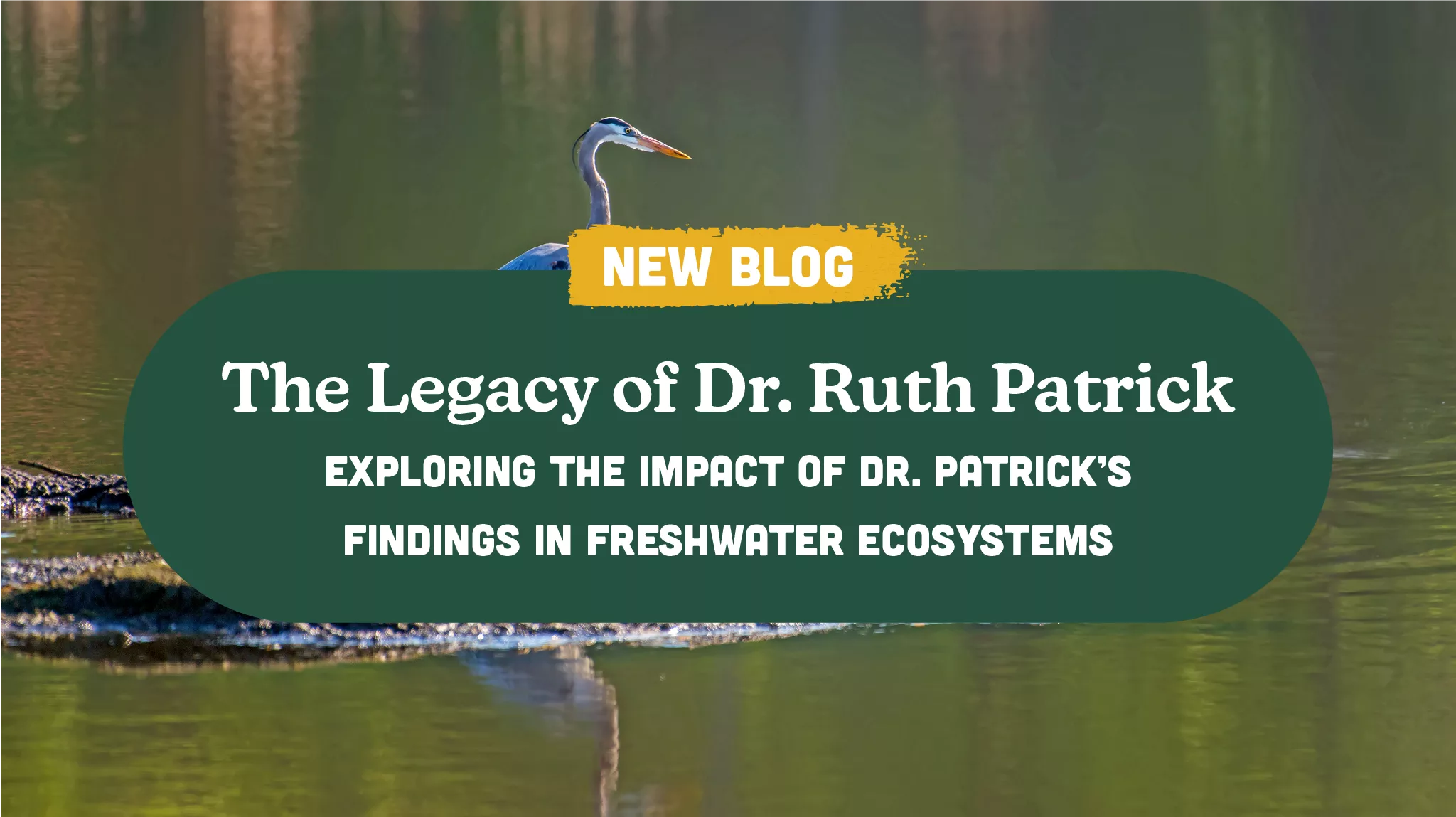The Legacy of Dr. Ruth Patrick

Here at LFT, we’re dedicated to preserving farmland and conserving its precious resources. Much of our conservation work focuses on water quality and its impact on the Chesapeake Bay. We help our farmers implement conservation practices to keep our waterways clean and healthy. However, our work in conservation wouldn’t be possible without the influence of numerous scientists and environmentalists, such as the famous Dr. Ruth Patrick. Dr. Patrick’s work in freshwater ecosystems shaped the water quality field during her time and continues to influence our approach to managing water quality today. But who was she, and why was her work so important? For Women’s History Month, we’ve decided to dive into the life and legacy of limnologist Dr. Ruth Patrick.
Ruth Patrick was born in 1907 in Topeka, Kansas. From an early age, she had a passion for nature, encouraged by her father to frequent nearby streams and observe diatoms — a type of algae sensitive to environmental changes — through his microscopes. Growing up in the early 20th century, Patrick faced the challenges of pursuing a career in a male-dominated field. However, she continued her education, receiving her bachelor’s degree in biology in 1929, a master’s degree in botany in 1931, and her Ph.D. in 1934.
Alongside her education, Patrick volunteered at the Academy of Natural Sciences in Philadelphia from 1933 to 1945. With these resources at her disposal, Dr. Patrick began to organize the academy’s diatom collection. Through this work, she developed an official filing system for organizing different types of diatoms. Throughout her career, this system would grow and help the academy’s herbarium become one of the world’s largest collections of diatoms. Finally, in 1945, Dr. Patrick accepted a full-time position as head of microscopy at the academy.
One of Dr. Patrick’s most influential discoveries was her exploration of diatoms and water pollution levels. At the time, the scientific community believed pollution was best measured by physical and chemical indicators alone—such as harmful chemicals. Dr. Patrick, however, explored the idea that the health of aquatic organisms could provide a better picture of water quality. Through her research, Dr. Patrick developed the “diatom indicator method” of water health assessment. This technique identifies the presence and diversity of diatoms to assess the health of water bodies. By analyzing the types and concentrations of diatoms in a water sample, Dr. Patrick could identify the pollution levels in the water without relying on chemical testing. The diatom indicator method eventually became widely adopted, influencing water quality management everywhere.
Water quality continues to be a concern in Lancaster County as our streams and creeks flow directly into the Chesapeake Bay. So, what happens on our farms here directly affects the health of the Bay. Thanks to Dr. Patrick’s work, LFT and other organizations can monitor Lancaster’s water quality efficiently, helping us protect our resources and do our part to protect the Bay.
Check out the resources below to learn more about Dr. Patrick’s life and legacy. To learn more about our conservation work at LFT, click here. Want to get involved? Click here to sign up to volunteer with us!
References:
https://www.britannica.com/biography/Ruth-Patrick
